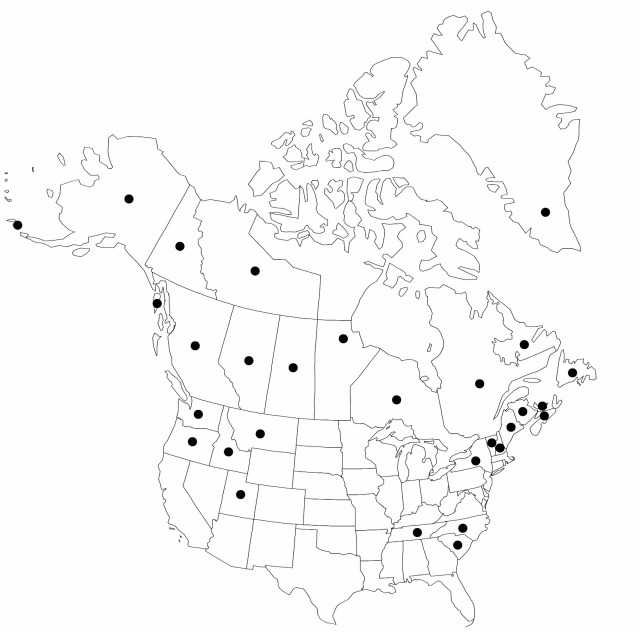Difference between revisions of "Trichophorum cespitosum"
Verh. Mitth. Siebenbürg. Vereins Naturwiss. Hermannstadt 4: 78. 1853.
FNA>Volume Importer |
imported>Volume Importer |
||
| (One intermediate revision by the same user not shown) | |||
| Line 72: | Line 72: | ||
|publication year=1853 | |publication year=1853 | ||
|special status= | |special status= | ||
| − | |source xml=https:// | + | |source xml=https://bitbucket.org/aafc-mbb/fna-data-curation/src/2e0870ddd59836b60bcf96646a41e87ea5a5943a/coarse_grained_fna_xml/V23/V23_38.xml |
|genus=Trichophorum | |genus=Trichophorum | ||
|species=Trichophorum cespitosum | |species=Trichophorum cespitosum | ||
Latest revision as of 20:40, 5 November 2020
Plants densely cespitose; rhizomes absent. Culms grooved, terete, 5–45 cm, smooth. Leaves: basal sheaths brown; distal leaf sheaths concave at mouth; blades 1.5–8 × 0.3–0.4 mm, much shorter than culms at flowering and fruiting. Inflorescences: spikelets 3–9-flowered, 3.3–7 × 1.2–3 mm; bracts equaling spikelets, 3.3–4.5 mm, apex with awn less than 1 mm. Spikelets: scales reddish brown to dark brown, apex mucronate to acute. Flowers: perianth bristles 6, brown, terete, equaling or exceeding achenes, smooth to scabrous; anthers 1.5–2.6 mm. Achenes compressed trigonous, 1.4–1.7 × 0.6–0.9 mm. 2n = 104.
Phenology: Fruiting summer (May–Aug).
Habitat: Open, wet, rocky or peaty meadows, fens, bogs, shores
Elevation: 0–2100 m
Distribution

Greenland, Alta., B.C., Man., N.B., Nfld. and Labr., N.W.T., N.S., Nunavut, Ont., P.E.I., Que., Sask., Yukon, Alaska, Idaho, Maine, Mont., N.H., N.Y., N.C., Oreg., S.C., Tenn., Utah, Vt., Wash., Europe, montane c Asia, boreal w Asia.
Discussion
Segregates defined on the basis of characters such as the number of flowers per spike and distal leaf sheath morphology have been recognized at varietal or subspecific ranks in North America and Europe. In North America, at least, these characters are variable within populations and appear to have no geographic integrity. North American plants of Trichophorum cespitosum appear to be identical to subsp. cespitosum (cf. R. A. DeFilipps 1980). No cytological differences have been detected between European and North American populations; all counted plants have 2n = 104 or n = 52.
